Travels in Western Tanzania

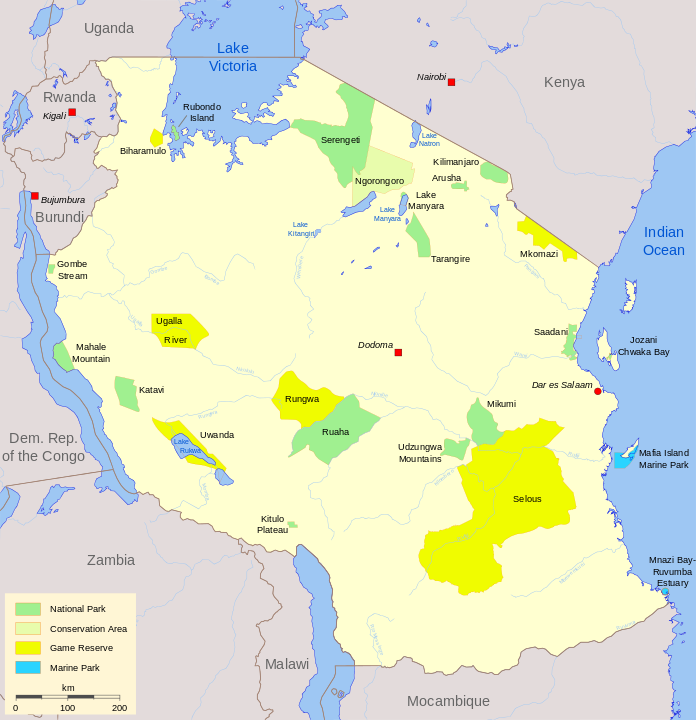
"By chance we met, by choice we became friends."
Millie
The Volcano Kettle Club set the scene for its next big adventure in Southern Tanzania with an expanded cast of 8. The fabulous five were of course all present, but added to our mix were 3 newbies straight out of the box. I think that most of our adventures are about the places and people we meet, but many of our best adventures have been with these fabulous friends whose spirit and curiosity encourage us to go further afield and out of our comfort zones, always confident someone has got our backs. So this trip is as much about the people as the places we travelled.

Meet the Team
8 Go Ape!

Well of course you know us by now. After all we write the blog. Note we are represented as a unit in this preamble because that’s how we move, in tandem and as an inseparable pair, cruising the world in the faithful Beast. Breakdowns all part of the experience
Lisa
The youngest and beautiful daughter of above intrepid adventurers. She is just like her dad, no filter but huge heart and often covered in mud (reluctantly!). She joined us on a full 4 months adventure all told. She drove in Bessie, our back up landcruiser, audiobook of the complete Harry Potter on full blast. She gets Hangry so best to throw the food through the open window and retire. I think we managed to cure her of the expectation of regular meals. Indeed I think we cured her of all expectation except, perhaps, survival.
Vicky
Our golden Amazon. She is 6 feet tall so we are used to Vicky being the only one who can reach those hard to reach places. A risk manager by profession, she is our organizer and banker, no detail too small. I am not sure how she feels when we continuously fly by the seat of our pants but she manages to hide it well. She pulled her trusty camera out of mothballs for another fun outing, competing with Robin for the most elephants.
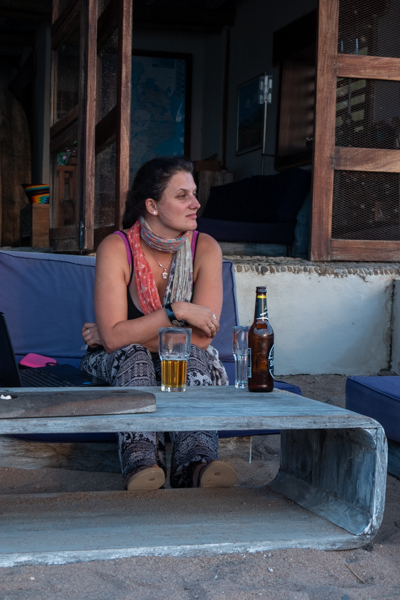
Our old friend and Dudleys back up mechanic. Sometimes it seems the blind leads the blind, but never mind. He is a 1/4 Maori and his collection of old safari clothes makes even Dudley look well dressed. He is never happier than when rolling around in the mud covered in oil. His snoring is legendary and one of our favorite pass times is to sit around the fire and count the seconds from the zip to the first snore. I think about 5 is the current record. He keeps the camp safe at night, has a wicked sense of humor and no boundaries.
Carmen
Ian’s wife and veteran African traveller. She is a small dynamo and a whizz at camp cooking, probably because of her Italian heritage. I remember a memorable meal when she cooked pancakes in the (rather smelly) loo because of the wind and rain. She keeps Ian in his place with a twinkle in her eye. Indeed the pair of them provide much entertainment by constantly disagreeing. She has our award for best street photography and manages to shoot fantastic and colourful local scenes while we all cringe and simper self consciously, not wanting to offend the locals. If she just stopped cutting off the feet we would have a winner!
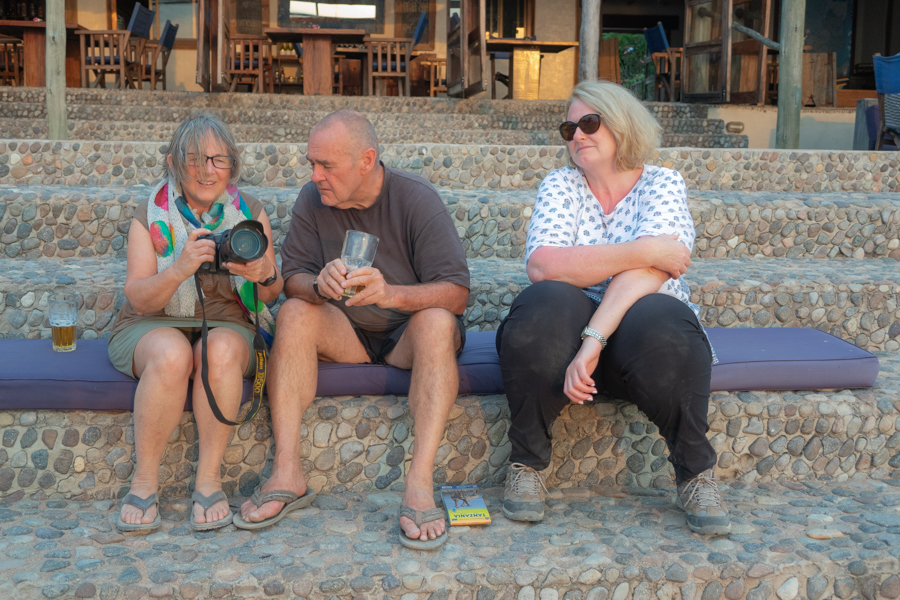
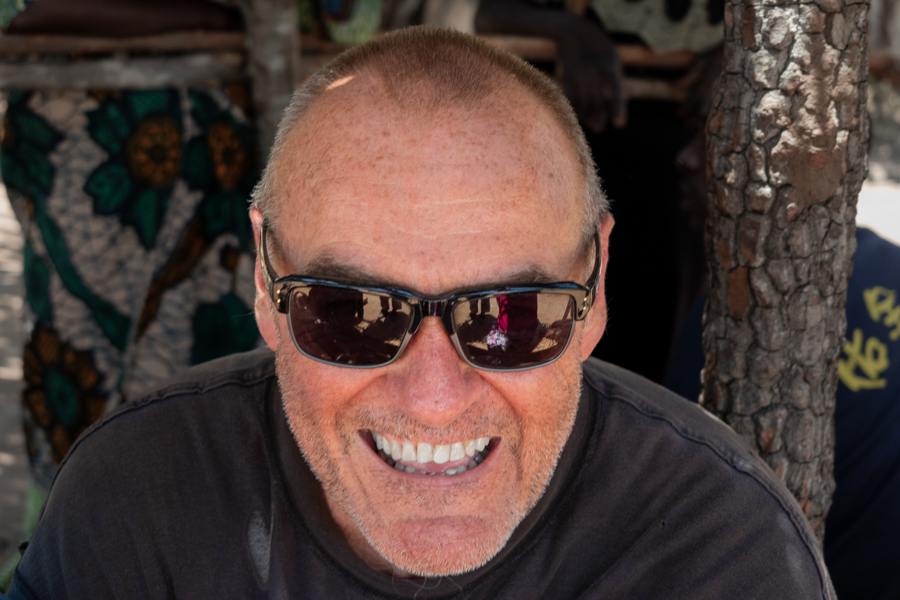
Stu
Ian’s brother, a younger quieter version of the great man himself. He was in bad books at home for leaving his pregnant daughter ready to deliver her first baby, but really says he, what was he supposed to contribute to childbirth anyway! I am pretty sure he slipped into the role of doting grandpa as soon as he got back. He observed the world with sensei calm and excelled with wry one liners while practicing “ alternate “ photographic techniques. This is code for rather uncertain focal length and cutting bits off.
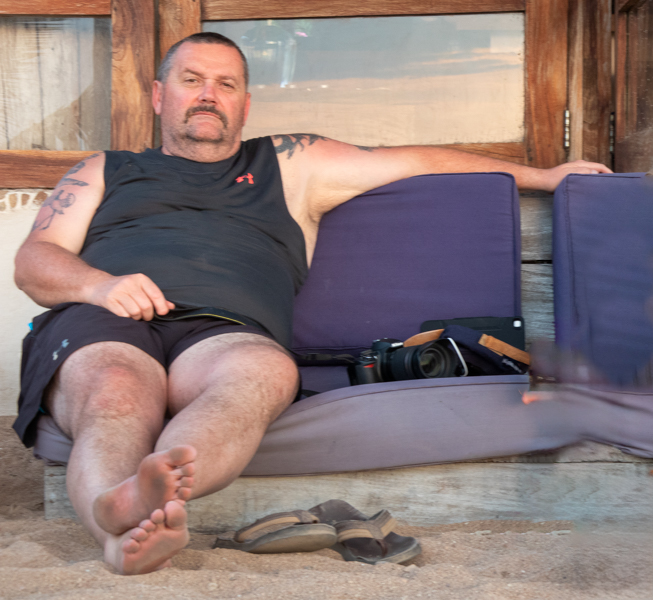
Robin
Vicky’s British friend, a great beanstalk of a man with booming voice and mischievous character. He works for gas and petroleum and delighted in stirring up debate within our little group of greenies. He brought his own chefs knife which he wielded as enthusiastically as his camera, informing the bemused tradesman he was going to cut the meat off the carcass himself. I am sure they thought he was going to rob them at knife point. He earned the dubious title of worst driver as his vehicle was almost unrecognizable at the end of the trip. Mind you we all took some knocks from inconvenient inanimate objects. What’s insurance for anyway?! Needless to say he forfeited his hire car deposit. Actually they all did.

"Friendship improves happiness, and abates misery, by doubling our joys, and dividing our grief"
Marcus Tullius Cicero
First Look
The plan was to meet at Mbeya in the south of the country, at a coffee lodge. We were driving up from Zambia but had been warned the state of the Tanzam highway was bad in the north, and the border crossing brutal, so we chose to reroute around to the West through a small border post outside Mbala. When we arrived the town was in an uproar. They were preparing for the centenary of the end of WW1. Apparently Mbala was the last place the Germans actually surrendered. I am not sure most of us even knew the Germans were in Zambia in WW1. Surely they had more important places to be? The locals were rebuilding barns and refurbishing buildings for the great event. I wondered if they were planning a reenactment. All the citizens seemed duly excited. I am not sure too much happens here normally so perhaps any excuse for a party. I doubt any one is still around from 1918. On the way out of town we passed my current favourite sign post announcing that we were in a “defaecation free chiefdom”. The mind boggles!


Tanzania is a bit if a revelation after Zambia. When Nyere took over he applied a number of relatively unpopular but interesting interventions. He first banned all sectarian tribalism. So no traditional leaders or kings or tribal leaders. In Tanzania you are Tanzanian, not Zulu or Khoza or Sotho. Imagine what it would be like in SA if we identified as South African first and as a cultural subgroup second. It means Tanzanians are a united country with little infighting or concerns around preferential treatment of certain groups and its a huge step forward. The second thing he did was a process called villagification. He saw he could not offer services to a population scattered far and wide across the countryside and he made people move into villages separated by the arable farmlands so he could provide schools and services. It was a pretty unpopular thing, and was one of the policies eventually abandoned, but it has created a better organized and better serviced population we could all learn from. On the down side his rather radical utilitarian communism was quite oppressive. He made everyone equal, if you had 2 hoes the police would come and take one away and give it to someone else so he killed any drive to grow and expand and create as an individual, effectively smothering entrepreneurship, so the Tanzanians seem to lack ambition. There used to be a saying that you always knew the Tanzanians in a room because they all sat in a corner looking miserable. Anyway times have changed and I think their drive and innovation will come back and he seems to have set certain frameworks which work so its not all bad. The people are perhaps less friendly than the Zambians though, maybe they are more wary of tourists. They have been in the tourist game longer.
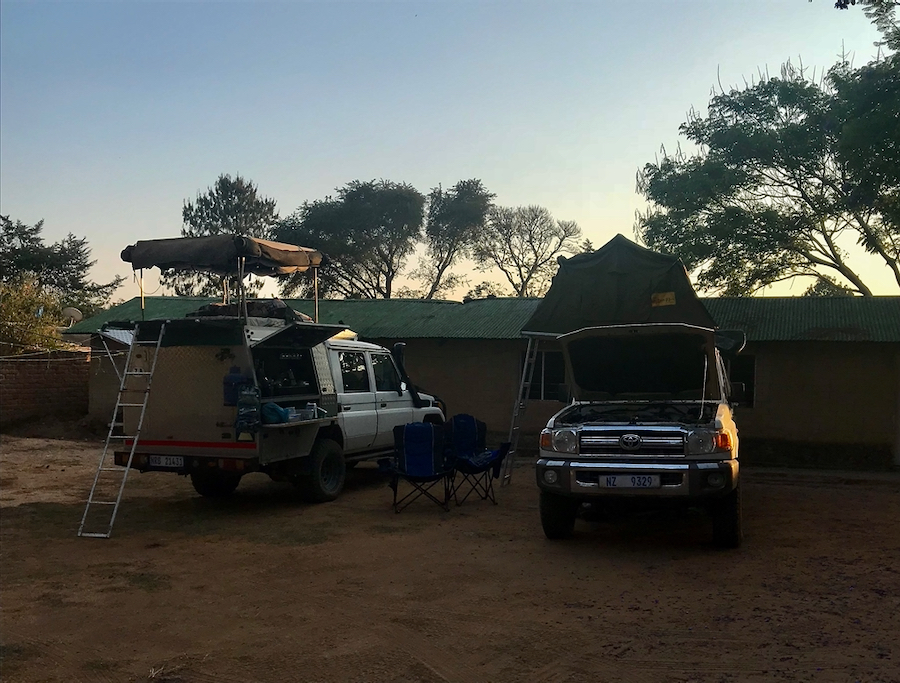

We found herds of Ankole-Watusi cattle next to the road. Known as the Cattle of Kings, this impressive East African cattle breed are hardy and drought resistant and their massive horns (upto 2.m tip to tip) give them protection from predators.
We drove into the country in late afternoon with no money and nowhere to stay and headed for the nearest medium sized town, Sumbawanga. There were no facilities for camping or self drive, indeed this south west corner of the country seems quite unused to tourism. Ultimately this became the norm for us in Tanzania, they do not encourage self drivers. We finally found a country club willing to let us park in the car park, friendly but run down, but they bought us buckets of hot water and had cold beer in the bar so the day ended well. All our accommodation in Tanzania ended up informal except when we found lodges that had campsites. Few and far between. Indeed we may rename it “carparking`’ instead of camping. Still we were welcomed quite warmly for the most part.
Mbeya Coffee Plantation
Next day we turned South East towards our rendezvous with the rest of the crew at Mbeya Coffee Lodge and Plantation. Do yourselves a favour, if you are ever in this part of the world book a day or two in this lovely spot. Roads from the West were pretty good considering, until we met the Tanzam Highway. Many road sections have been sponsored by USA and EU with pavements and curbing through the villages. The villages were however frequent, and had a 60kph speed limit and fairly vigilant traffic police so the going was slow. The Tanzanian police are not allowed to take cash so we got around our few brushes with the law by claiming we had no credit cards. Exasperated they let us go. They pull you over and fine you the same amount if you are 1 km over the limit or 100 km over the limit. At the lodge we met a cavalcade of vintage cars driving from Dar. One man had accumulated 20 fines in 1 day! Clearly money was no object.
The lodge has chalets, catered and self catering and a rather rudimentary camp site. We settled in to await our chums who, at the last minute, decided to drive from Dar and got lost. Always start as you mean to continue I say.

The plantation is impressive and their coffee is delicious. Run by a Zimbabwean, he hosts tours of all the coffee processes from growing to picking and roasting.

We spent a restful 2 days while recuperating and stocking up for the journey ahead. Ian put on his old painting togs, an outfit he would wear proudly for the next 1 month. Also known as 'leave-ems' as he never takes them home. Robin jumped up and down with excitement and managed to get the first flat tyre. Indeed he shredded it. Little did we know it was a sign of things to come. Stu looked on enigmatically and Vicky, Carmen and I drank gin. Dudley repacked all the cars. Lisa inserted herself into an empty room in one of the chalets. To be fair she had been camping for 2 months at that stage!

Katavi

Our first adventure was to the game reserve at Katavi. It is the third largest park in Tanzania but is far from the more popular tourist spots and so has low visitor numbers. It is 4500 sq km around the Katuma river and lake Chada and lake Katavi floodplains. In dry season, when the waters dry up, it is renowned for the hundreds of hippos and crocs which crowd the mud holes. It has all the African game here but some rumors of poaching. Certainly it seems largely unfenced and a national road runs through it. HQ is on the border and no one seems particularly interested in patrolling. Many people fly in to one of the 3 lodges and Wikipedia describes land access as a ‘tough but spectacular drive’ from Mbeya. No prizes to guess which way we planned to go!
We arrived at the road through Katavi in the late afternoon so we traversed the park and ended up in a camp site on the border run by Mr Juma. It overlooked the Katuma river and so had its own hippo population right there. It was also less than 10% of the cost of the park. Mr Juma supplemented his income by taking people from the camp for day trips into the park. Unpaid I suspect.
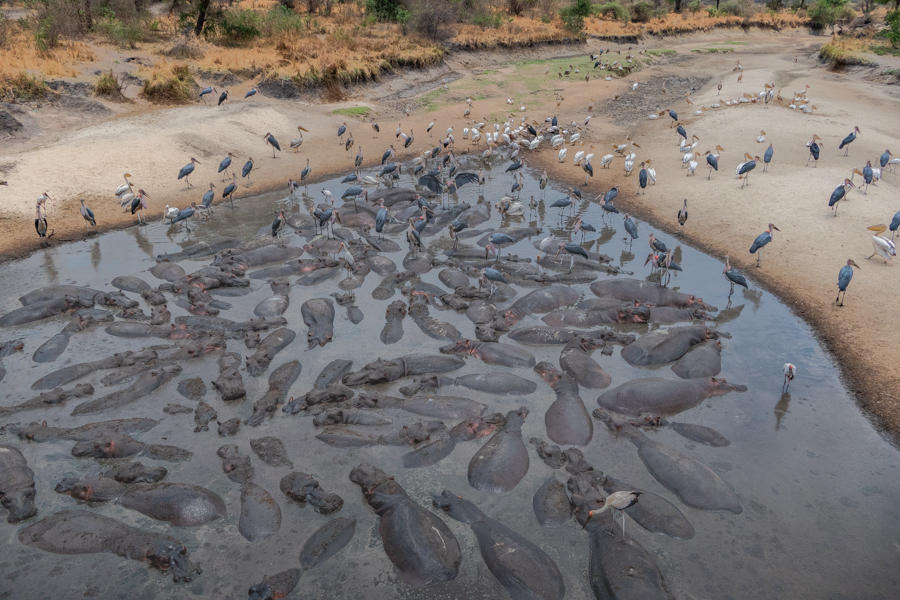
Next day we headed for HQ. Generally speaking the Southern Tanzanian parks are less expensive than the north but that’s not saying much. By the time they finished with us they still demanded a hefty $460 for 2 nights. This was just for Dudley me and Lisa. Total bill was close to $1000 for all of us, $500 a night. They put a big surcharge on the foreign registered vehicles, $40 a day each. Tanzanian vehicles $9 dollars. Grumbling we shelled out and continued into the park to find our camp. The camp is very rudimentary. There was an ablution block with a squatter toilet and a normal toilet and the shower was suspended above the toilet so you had to sit on the toilet to shower. The water was cold. It had not had any cleaning attention for a long time despite there being a rangers camp with many staff lolling around next door. Rather a poor show for the price but not unexpected.
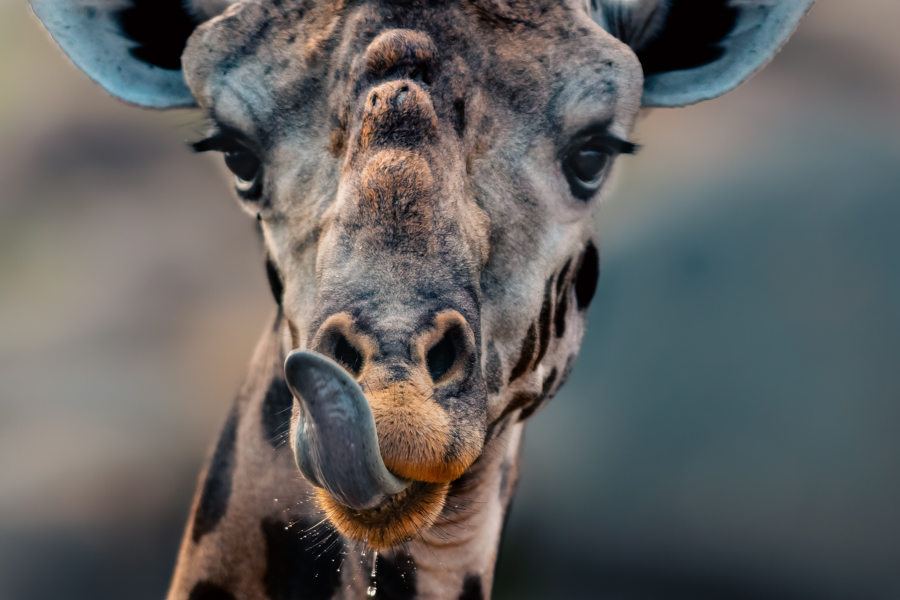

The park is huge and quite difficult to navigate. In the wet season the floodplains obliterate the roads which then have to be redrawn each season. For this reason none of the GPS systems are very accurate on the roads including T4A. You hit river crossings and dead ends all the time. Bearing in mind the healthy hippo and croc populations river crossings can be tricky and getting stuck even more so. Riverine bush is thick with areas of vast savannah on the floodplains. The crocs and hippos were in good supply and many marabou storks and vultures. We also saw leopard and lions during our stay, many antelope, elephants and giraffe but the sightings were in quite thick bush and the animals skittish.

Coming from Mtunzini the Palm Nut vulture is a local celebrity. We were amazed and overjoyed to see another healthy population of these overgrown chickens in Katavi with, of course, a healthy palm population to sustain them.
Fish eagles soared over the waterways and wetlands.
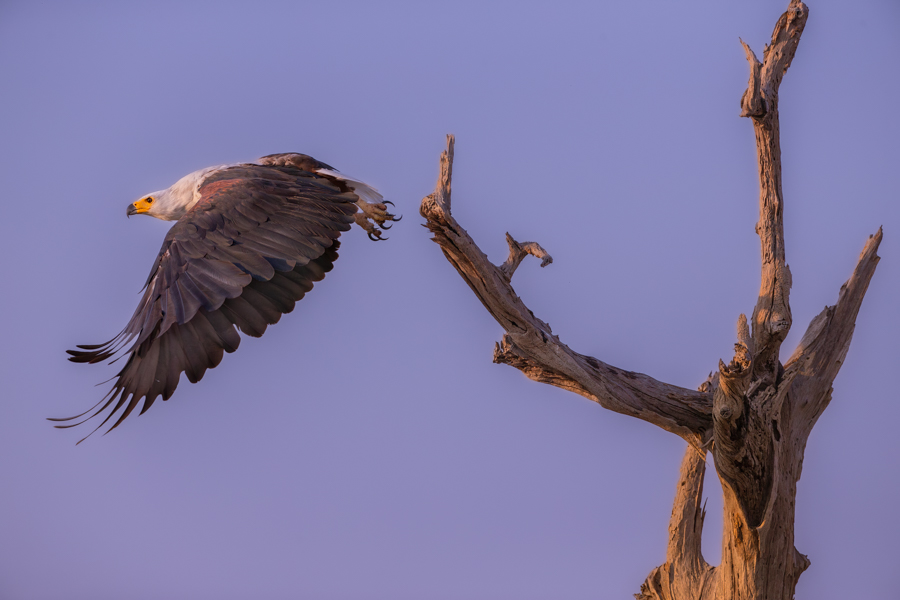
The highlight were 3 giraffes flighting under trees next to the road. We think it was older males instructing a youngster so no real animosity, but still graceful and fascinating.
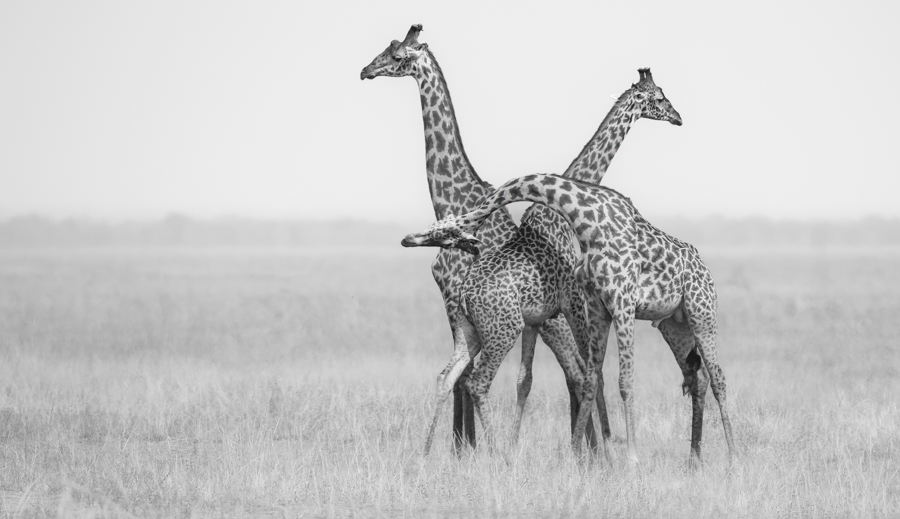

We stayed 3 nights eventually. No one asked for our permits or checked on us in this time. Nor were there any checks going in and out of the park. You had to drive to the HQ, they did not come to you. We felt our free day reduced the price to a more reasonable level considering the poor maintenance and infrastructure. We made like the tortoise and kept our heads down!
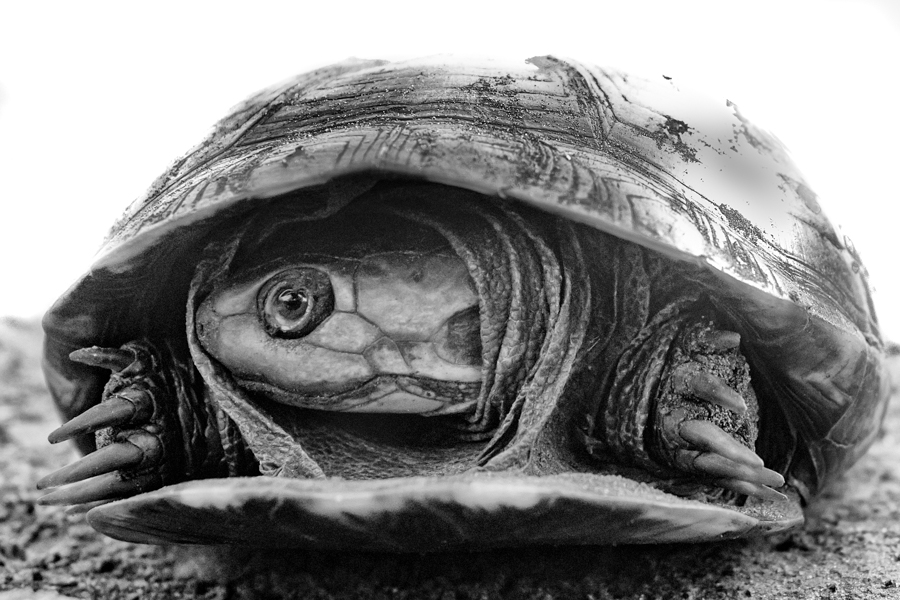
Lake Tanganyika

From Katavi we turned West to Lake Tanganyika. We had been told of a lodge on the edge of the lake near a village called Kipili, run by South Africans and highly recommended. We swung back through Sumbawanga, and another informal night in the car park of the country club, and then trundled down to the lake. The going was slow again, partly the speed limits and later the poor quality dirt roads. In the West of the country travel is measured in hours and days not kilometers, that’s for sure.


We were not disappointed. Lakeside Lodge was a beautiful place with a thatched lodge built right on the waters edge and campsites behind in the trees. We were welcomed warmly. This lodge also offers scuba diving but the dive master was out on a dive trip for a week when we arrived so we lost the opportunity. A sunset cruise gave us the chance to appreciate the vast beauty of the lake, bathed in golden light. As you cannot see the other shore it is like a small sea. Small fishing boats greeted us and offered us fish.
Cichlids


The following day we went on a snorkelling trip into the lake and found rocky outcrops with shoals of small colourful fish. These are the famous Cichlids. Cichlids are a family of colourful freshwater fish. The African Cichlids, the most diverse group, comprise over 1600 species that populate the Great Lakes of South East Africa, Tanganyika, Malawi, Victoria and Edward. Fossil evidence suggests they first appeared in Tanzania 45 million years ago. As a group they exhibit a wide variety of sizes and body shapes, from angel fish to tilapia. They are efficient, diverse and highly adapted feeders, which may explain their success, and they have all developed a high level of parental care including courtship, nest building, guarding the eggs and mouth brooding. They are of particular scientific interest as they have demonstrated a very rapid evolutionary radiation, both across the clade and within different communities. I guess its adapt or die in their neck of the woods.
Our favourite wildlife documentary team, Deeble and Stone, A British couple, used this lodge as their base when they filmed ‘Little Fish, Deep Water’ about the Cichlids of Lake Tanganyika. (Find it on AppleTV+) The little fish are endlessly entrancing in their variety and behaviour and make for hours of fascinating snorkelling.
Little Fish Deep Water Clip

We set out for an afternoon snorkelling trip into the lake and swam around a small rocky island watching the fish. Suddenly Lisa came up to me full of excitement. She had seen otters swimming in the crevices. Sure enough we found 3 small sleek critters darting in and out of the rocks and caves, their pelt silver from the trapped air bubbles. That was sheer magic.

On the way home the more adventurous of us climbed a large rocky island to jump from the top. Apparently good luck. At least if you survive.

Above the lodge, a short walk, is the ruins of a missionary church called Jiweni-Kamba. It was built over 120 years ago by the White Fathers or ‘Peres Blancs’, a French catholic missionary group which spread from Algeria into East Africa at the end of the 1800s. The name refers to the fact they adopted North African dress including the white gandoura or djellaba for their vestments. It is the oldest surviving church in Tanzania and makes for beautiful sunset shots against the backdrop of the lake. It is marketed as a wedding venue but there is only a ruin there overgrown with weeds.
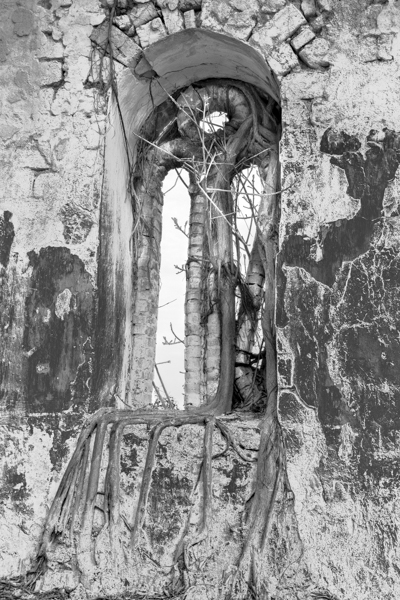


Mpanda
We were starving and piled into the restaurant to eat. It took an hour to produce 6 cold omelettes and 2 very tough chickens. In fact food in Tanzania was definitely different, generally not in a good way, and their chicken or supa kuku tougher than old leather. Anyway we dispersed to stock the pantry, buy beer and fix and clean cars with some success. The market was humming and full of fresh produce and some weird dishes. The locals were cheerful but not always entirely friendly. I am pretty sure they added a zero to each of our purchases. There were a lot of Burundi people selling in the informal sector so I could at least manage some limited communication in French.

That evening, allowing for the poor lunch service, we ordered supper early. A wedding cortege drew up to have photos taken with the lion/ zebra in the garden and we were wary incase the hotel was catering the reception. The menu was limited to supa kuku, kuku and chipsi and egg and chipsi or meat (unspecified) and chipsi. 2 hours later it arrived stone cold and almost inedible, clearly sourced from somewhere at the back of the market rather than the hotel kitchen. There is a reason Tanzanian cuisine has not yet hit the international marketplace! We consoled ourselves with cold beer and cut throat cards
Mahale
" Chimpanzees, more than any other living creature, have helped us understand that there is no sharp line between humans and the rest of the animal kingdom. Its a very blurry line, and its getting more blurry all the time…"
Jane Goodall

The next place on our list was, perhaps, the main destination of the trip. Mahale Mountain National Park is one of the 2 parks in Tanzania which boasts populations of wild chimpanzees. The other park, Gombe Stream, is on the northern border of Lake Tanganyika, and was the base of Jane Goodall for many years. Mahale, however, is the larger park 1600 km sq, a mountainous knuckle jutting into Lake Tanganyika, an extension of the Rift Valley escarpment and reaching over 2500 m, just south of Kigoma. Mahale has over 1000 chimpanzees as well as a plethora of other fauna, birds and primates, Gombe has only around 100. Both parks are in pristine rain forest and only accessible by boat. They are also some of the more expensive Tanzanian parks. What’s new!
The road system is poor (most tourists fly in) and we decided to drive there across country from Mpande based on the rumor that a Dutch guy had managed it a few weeks earlier. This route is purported to be accessible in dry season but not in wet weather. Needless to say we set out in the dry but it did not last long and we got a real time demonstration of the challenges of driving this route in the rain.

After a fairly uneventful 100 km of dirt track the road just disappeared. There had clearly been subsidence of the bank which had taken the road with it. As there were quite dense bamboo plantations on either side you could not drive around. We were stumped. The boys got out to walk and on the other side of the hill they found a guy with a digger truck. A short negotiation later and he agreed to come and dig a road for us. You would think we would have had an inkling that this was a tricky road but we joyfully mounted up and ploughed on. It was, after all, only 50 km further to the lake this way, compared to nearly 500 km via Kigoma which is the only other route.
20 km further on and we had our first river crossing. A narrow muddy stream with a rock and tree standing narrow sentries mid stream as extra obstacles. The beast got half way across but could not negotiate the steep slippy and muddy exit and we had to deploy sand ladders and winch our selves out. The rest of the caravan got a few dings. Robin, true to form, gouged his door on the rock but missed the tree. The rain started falling steadily. The road became slippy mud with no traction and coated our tyres, but by this time there was no going back. The topography of the river crossing meant that it was probably not negotiable in the opposite direction. By now the cars and everyone in them were covered in black mud. Another 10 km and another river crossing loomed. This one even more tricky than before. Very steep entry and exit. We headed in fast and made it to within 1 m of the far bank before stalling, but managed again to winch out. Rocks and sticks and sand ladders were deployed but just sank into the ooze. Everyone wielded a muddy spade. All the other cars got stuck and we winched and pulled them across. The beast heaved and strained and the wheels spun up the black mud. Robin was the last across . He had no winch point on the front of his vehicle, only on the back (who rents out a 4X4 vehicle with no winch point?) So we made him drive in backwards at speed. Crazy but we were out of options. More dings ensued, but eventually we had the whole mud soaked crew across. The village had come out en masse to watch this real life drama. Better than TV.

3 hours later and we were back on the road. The rain was now coming down steadily. Only 20 km to go. Surely, we thought, that was the last obstacle but no. Yet another river crossing awaited us and another few hours of stacking rocks into the gullies and pulling everyone across. By now we had been on the road for 12 hours. We were tired, dirty and hungry but had no choice but to soldier on. The sun went down and we slowly drove down steep gullies and across hilly ravines by starlight. When we finally popped out on the main lake road no one could quite believe it. The stars lit our way as we trudged on towards the park. There are no official camp sites here but we managed to get a spot in a car park of a Tanapa office on the lake side. They unlocked a squatter toilet and gave us access to a tap. We have never been more thankful. 16 hours for 130 km, most of it spent on the last 50km. Probably a record. Everyone slept like the dead, aided by copious amounts of gin. Never let Robin behind the bar!



Next day we drove the 60 km along the lake side to the Mahale airstrip. We wound through small fishing villages, trays of tiny fish drying in the sun.


Arriving at the airstrip we prepared to mortgage our homes to pay for a couple of precious days in the park. You cannot camp and you cannot drive. There are no roads in Mahale. There are some Bandas for rent, small rondavels, at the base camp. All trekking is on foot. The payment for the Bandas, park entry and chimp tracking was nearly $2500 for the 8 of us, and we decided 2 nights should do it. At least we would have 1 or 2 opportunities to find the chimps. Next is a boat rental for TSH 300,000 to get to the camp. It is self catering so we had to decant all our food, cameras and clothes onboard.


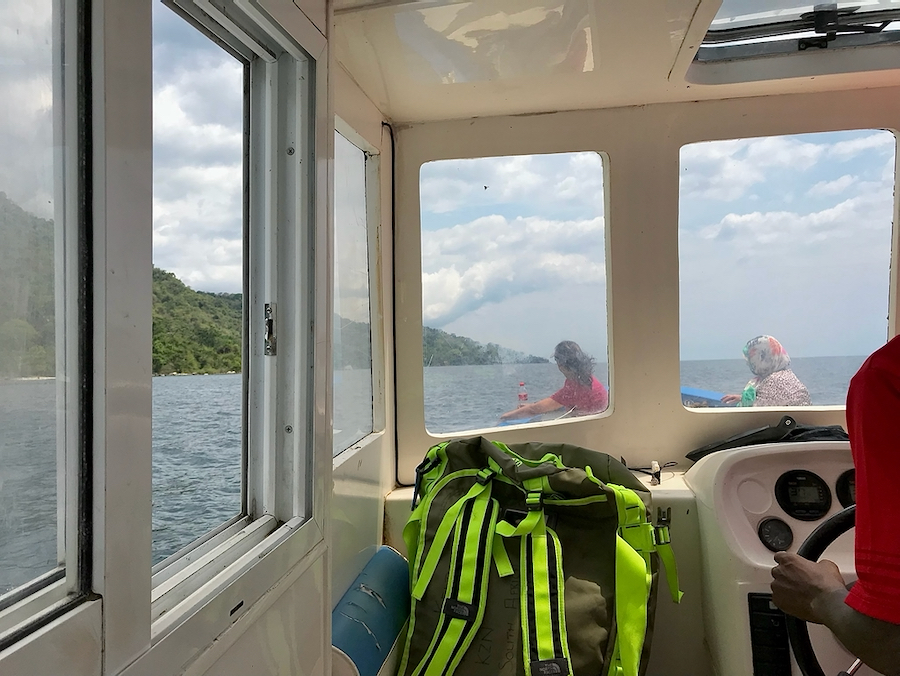

The boat skimmed the waters past vast swathes of unspoiled rainforested slopes until we landed on the jetty. A short walk brought us to the camp. The rangers were friendly. There was a communal kitchen with a solar TV and the bandas were comfortable. The climate was hot and humid as you may expect from a rain forest. Colobus monkeys swung through the trees. There are several species of Colobus in Mahale and they are a prey species for chimps. As old world apes they have a very primitive thumb and so are slower and less agile than the new world apes, presumably easier to catch. We were warned to watch out for the wild boar, especially at night. They then told us all the gear we would need. Predictably we has left most of it in the cars. We arranged our chimp trek for the following morning and went to bed full of anticipation. In the night we could hear the wild boar rustling in the undergrowth.

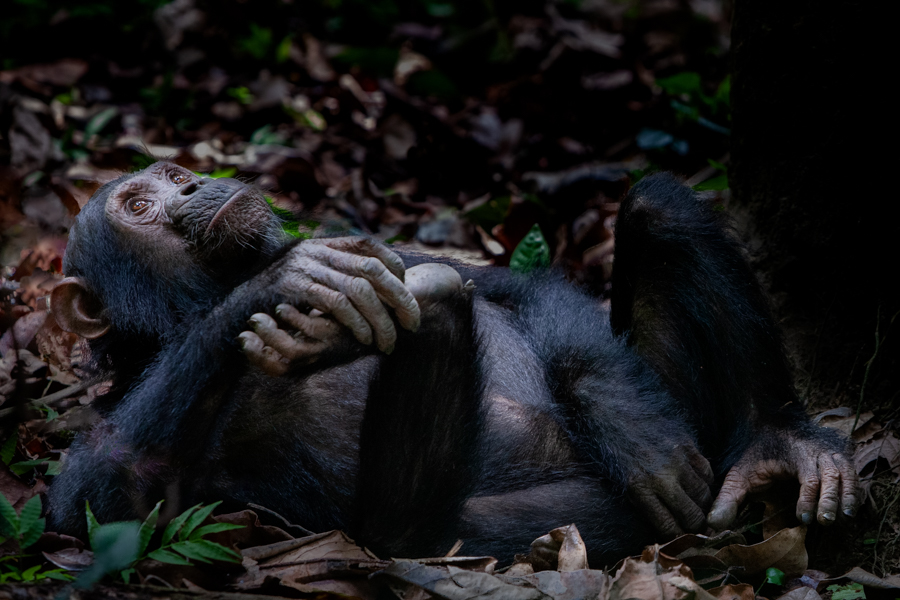
"I don't care two hoots about civilisation. I want to wander in the wild."
Jane Goodall
Next day we formed ourselves into 2 groups, the fast and fit and the pole pole group (Swahili for slowly slowly). My knees dont let me walk fast or far and I was worried I would not make it but they reassured us the chimps were no more than 45 minutes away and Dudley gallantly joined our pole pole group to push and pull me up the hill. The tracks are basic and a lot of the tracking occurs off piste as it were, the terrain is very steep and the forest is humid and hot. We had strict instructions that no peeing or eating was allowed in the forest and masks were to be worn within 50 m of the chimps. They are highly susceptible to human disease. It was so hot there was little chance of peeing. We were bathed in sweat after the first 100 m. We scrambled and (in my case) crawled our way through the undergrowth. 45 minutes went by but by now the bit was firmly between my teeth. No going back. 3 1/2 hours later and we found them. A lovely family, grooming and foraging on the forest floor. It was so worth while. They are such intelligent and engaged creatures. You can believe we have ancestors in common. The rules allow you 1 hour with the chimps and we took photos and sat quietly while they interacted around us. You may not approach but they can approach you, which they did with curiosity and mischief. When we finally left they followed us all the way down the mountain to within a couple of hundred meters of the camp, screeching and chasing through the trees. It was a truly magical experience and I think we were lucky. They do not always interact so directly.

The following day a smaller group went out again to find them. I stayed behind to recover. Also if I took any more analgesics I would need a stomach pump or dialysis, or both! The chimps were closer but were up in the canopy so it was a less personal experience that day. All too soon we were back on the jetty waiting for our boat. A few more days would have been great but the cost means you have to compromise. These rain forests also boast a huge number of monkey species and birds but we had little time to consider or search for them. It was all about the chimps for us in that magical couple of days. Oh well, next time.


We managed to get back to the airstrip by late afternoon but they would not let us stay there. We had to get lost because they were expecting a plane. They sell the high end tours on the basis of the inaccessibility and so it does not do to land and be surrounded by a bunch of ragged overlanders it seems. Especially with the state of our vehicles. Stu and Robin were busy trying to bang out his door so that it would close. Still the high end tourists pay upwards of $1000 a night each for the privilege of feeling elite. Just down from base camp is Greystoke Lodge (note the Tarzan connection) where they have trackers to find the chimps before their guests even get up in the morning. No 3 hour trek for them.
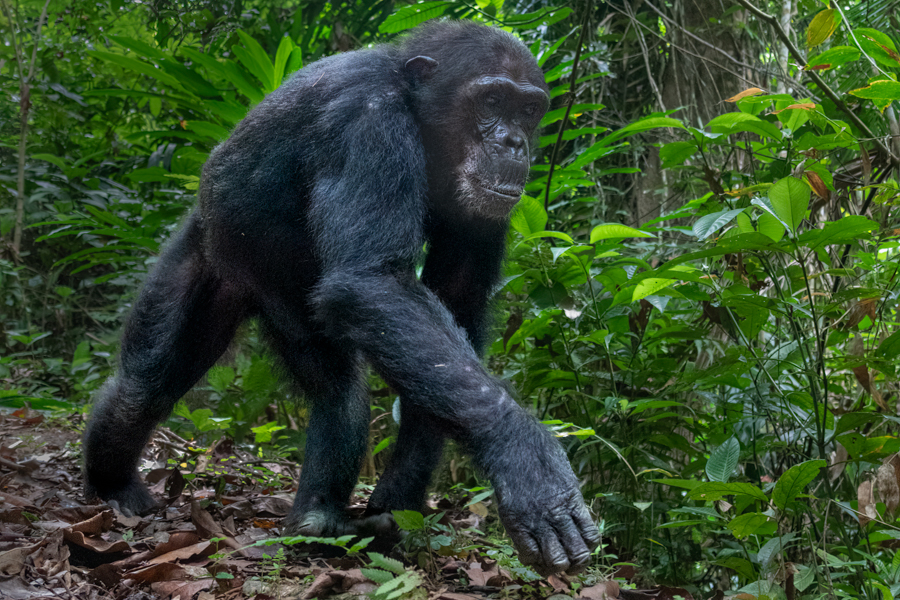

Kigoma


After another night in the Tanapa car park (friendly as always) we headed along the lake side up to the town of Kigoma. This is close to the Burundi and Rwanda borders. We stayed at Jakobsens Beach Lodge right on the lake and got a sweet spot overlooking the water. Ian, whose car had largely come through unscathed, managed to knock down the only tree on the site and put a huge dent in the back. Oh well, now everyone matches.
Kigoma is a busy port town. We bought fantastic capulana material and went food shopping. Robin took out his big knife and cut his own meat at the butcher but was then forced to also buy and pay for all the bones he removed. Bone soup appeared on the menu. Not recommended! In many African towns meat is not divided into cuts but just removed from the carcass as the client arrives, hacked off with blunt instruments and showering bones and blood in the process. You have to keep going round and round the queue to get to the front when the piece you want is ready to be cut. We were used to the rather random availability of supplies by then. We had more difficulty getting tyres repaired. And we did need tyres repaired, especially Robin who popped them like balloons. We met Paul, a Capetonian who had been driven into a ditch by a truck. He had been marooned there for 2 weeks trying to get someone to fix it but to no avail. He was preparing to ship it to Dar by train. Anyway it was a Landrover so say no more. Car mechanics appeared, surprisingly, to be in short supply this side of the country.

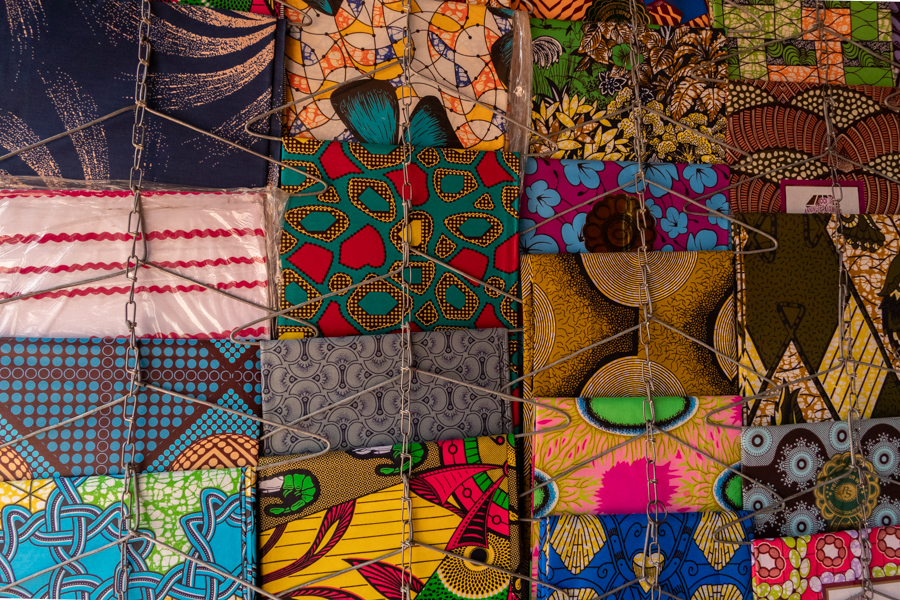


The busy , but chaotic, market place. Everywhere you see the colourful designs of the cotton or wax coated material. Known as capulana in Mozambique, and kangas or kitengas or kikois elsewhere in E Africa, they are worn as dresses or skirts, baby carriers and head dresses and the designs are often regional. Someone even covered their motorbike seat with it!

A well earned dinner at the local hotel.
"Dr Livingstone I presume"
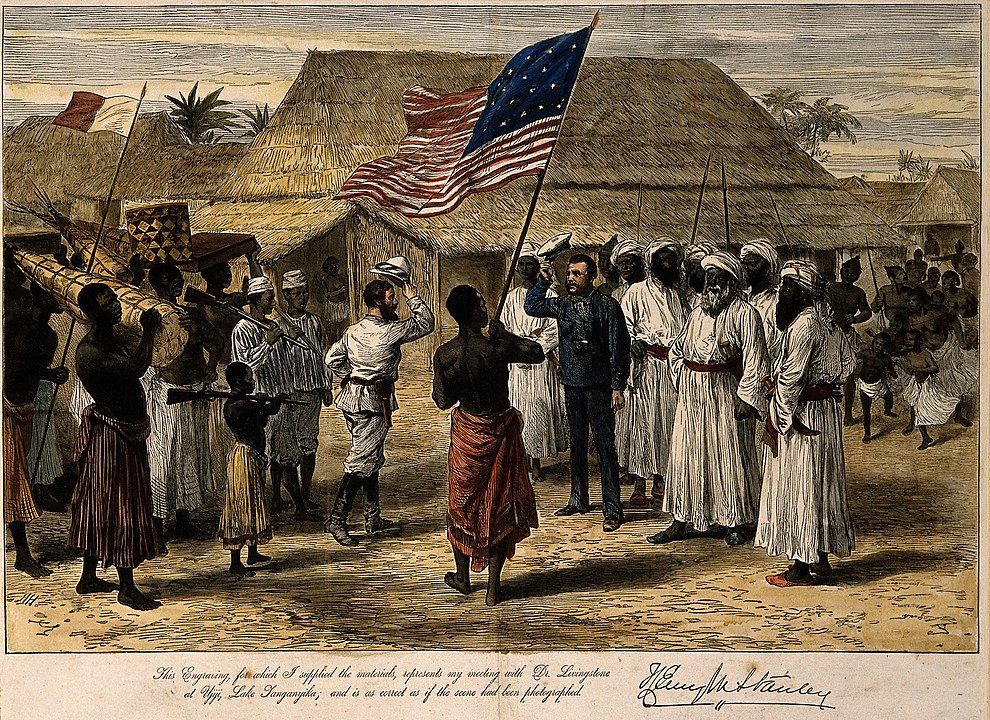
In 1871, just 6 km south of Kigoma, in the ancient port town of Ujiji, Stanley finally found Livingstone and uttered the famous words “Dr Livingstone I presume?”. They have a memorial and museum and 2 mango trees in the garden, slipped from the original mango tree where the meeting took place. The slavers planted mango trees all along the slave route from Bagamoyo, south of Dar, to Ujiji, which they used for food supplies. Livingstone was very active in the anti slave movement of the area. Burton (our own personal hero) and Speke passed through Ujiji in 1858, exhausted, injured and sick, during their search for the origin of the Nile.
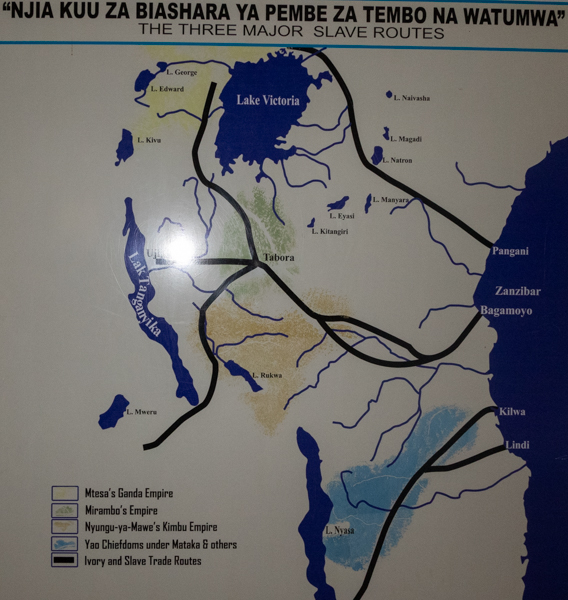
We visited the museum, overpriced and largely a dusty empty space, after negotiating something of a discount to the tourist price. It was awe inspiring to be standing on the spot that these titans of exploration stood.


"February 14 th 1858 Burton and Speke reached Ujiji whence they explored Lake Tanganyika"
Monument to Livingstone and the famous meeting with Stanley under the mango trees.
Livingstone spent a lot of his later life in and around Ujiji. He was obsessed with finding the source of the Nile, primarily to give him the political gravitas to influence the East African Slave trade policies. He witnessed appalling cruelty but was forced to rely on the traders for help and support in his travels.
“And if my disclosures regarding the terrible Ujijian slavery should lead to the suppression of the East Coast slave trade, I shall regard that as a greater matter by far than the discovery of all the Nile sources together.”
— Livingstone in a letter to the editor of the New York Herald


He also (as a physician) believed he had identified a new disease he called “ broken heartedness” through his observations of the slave trade
“The strangest disease I have seen in this country seems really to be broken-heartedness, and it attacks free men who have been captured and made slaves... Twenty one were unchained, as now safe; however all ran away at once; but eight with many others still in chains, died in three days after the crossing. They described their only pain in the heart, and placed the hand correctly on the spot.”
-Livingstone 1874
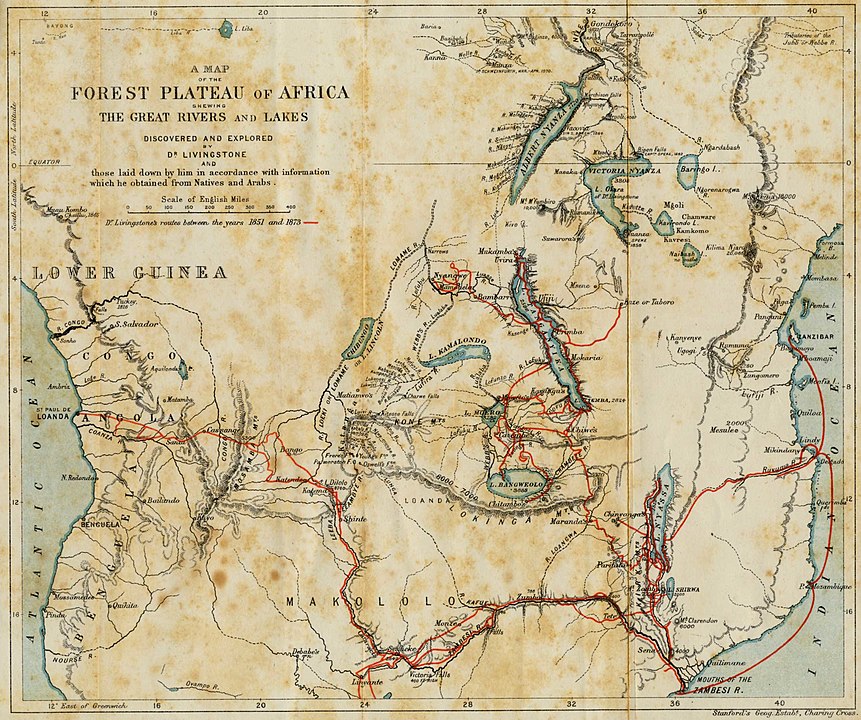
Map of Livingstone's travels in Africa
As one of the earliest explorers who paved the way for colonialism in Africa, Livingstone has retained a positive legacy amongst most of the nations he visited, which is more than can be said for many who came after him. It must be stressed he did not envisage colonialism as the exploitative process it later became.
Ruaha
From Kigoma our route took us West across the country via Tabora and Dodoma, the capital, before heading south again for our next destination, Ruaha National Park. As we drove we saw the route was lined with the mango trees reminding us we were traveling the old slave routes. Many of the roads were undergoing upgrade so the going was slow but traffic was light.
We came through Tabora, another place where Livingstone stayed for some time, and we found a stopping place for the night at the Orion Tabora Hotel, or rather in the car park of said hotel. It was built by the Germans when Kaiser Wilhelm was due to visit but he ended up not coming because war broke out. Later the Brits took over and added the Princess Margaret Wing for her East Africa trip, so its a pretty fancy place in the middle of nowhere. Faded of course, but still. As good a watering hole as any. The Umpah band across the road was slightly disconcerting through the night though.
From Tabora we continued to Dodoma. Dodoma is an odd concept to me. Before we visited I had no idea it was the capital of Tanzania, even though this was my third trip to Tanzania. I think a lot of people, like me, are under the impression Dar is where its all at! Dodoma sits in the centre of the windswept central plateau and goes against the cultural norm where capital cities lie in a social, historical and economic hub. Proclaimed in 1974 it retains a small town and new, built for purpose, vibe. It is of no tourist interest at all, which is why it gets less than a page in most travel guides. However we travelled through early in the morning and were witness to a whole culture of folk running and exercising by the side of the road, and on traffic islands, as if it was the fitness hub of the universe. Interesting, and of course, most commendable!
A small ferry took us over the final river. We queued for about 30 minutes in brutal heat then found the Beast had a flat so we pulled out of the queue to change it, assuming we could hop on the next ferry. Little did we know the system required the ferry to be full on the other side before it came back. A tense hour ensued while we weighed up if it would ever come back. I think they took pity on us. Traffic was light in that direction!

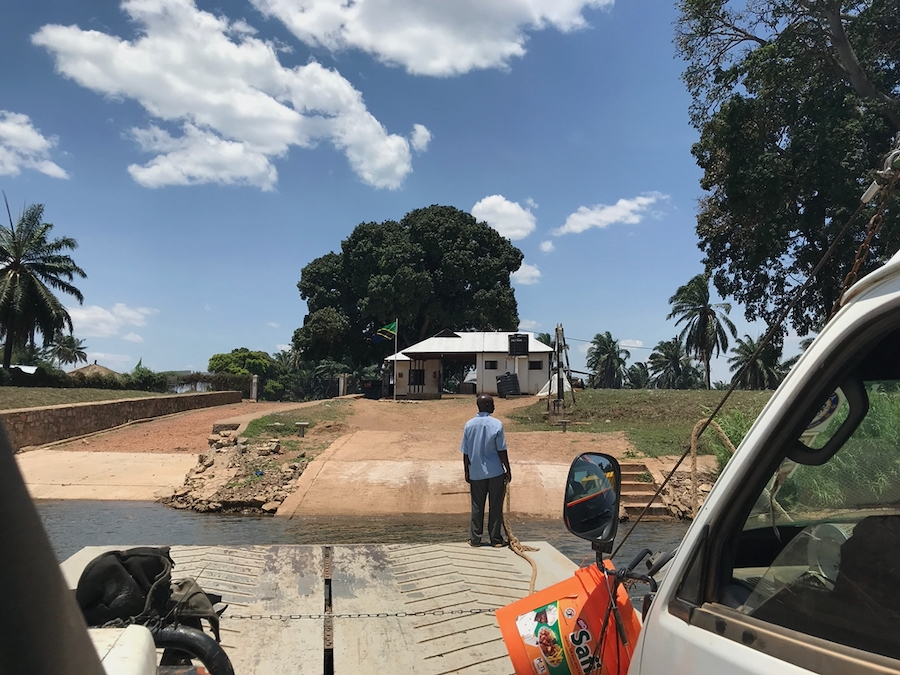
After 2 long days drive we pulled into Riverside camp outside Iringa. A big grassy camp under trees and most welcome. One of the few “proper” camp sites of this South Tanzania trip. Next day we made the last push to Ruaha.

The blood red sunsets were typical of the Ruaha landscape.
Ruaha is the biggest national park in Tanzania at over 22000 km sq, and is part of an unfenced conservancy which takes the size of the associated ecosystem to over 50,000 km sq. It has the largest elephant population of all the parks and similar big cat densities to Mara/Serengeti. Additionally Ruaha boasts a healthy wild dog population. We were ready. As a more difficult to access park it is generally quieter and slightly cheaper, only about $80 ppn and we checked in for 3 nights with anticipation. There are 2 camp sites and about 3 lodges in the park so generally you are roaming around without too many other vehicles in sight. A rash of small lodges have grown up on the road from Iringa offering day tours.
The camp sites are adjacent to the main ranger camp which is more of a village with a small shop and bar and club. Many houses and lots of families. We found a spot next to the river with a fairly new kitchen area where we could shelter from the heat, and an almost functional ablution block. It was clearly fairly new but already most things were falling off the wall. Disconcertingly a few live wires were trailing down. Still we have had a lot worse. Also we had our very own Baobab tree.


When frightened they make a whistling 'zik-zik' noise through their noses which Is likely the origin of the name dik dik..
The park is a mixture of ecosystems. the Great Ruaha river borders the park. There are riverine and wetland areas, forest and savannah and one of the highest densities of baobab trees I have ever seen. Quite spectacular. On the downside there are also plenty of tsetse flies. It is for this reason this area was never permanently settled prior to its proclaimation as a park. The tsetse are always sneaky. They are not everywhere but suddenly appear in numbers. It’s usually a sign of a herd nearby but by then you dont care. Lisa and Ian were sitting on top of our roof hatch when a whole swarm descended on them. To screams of “go faster” we gunned the engine but out running these sneaky assassins was proving difficult. We swung into a waterhole, passengers screaming, engine roaring, only to bump into some very fancy lodge vehicles sitting on some lions. Needless to say the lions left and our name was less than mud in certain circles. I suspect they will use this example when next arguing for highend exclusivity, keep out the riff raff. The lodge vehicles all burn elephant dung to deter the tsetse so we set up an old paint can and filled it with ele poo and set it alight before hanging it off the front of the beast. It definitely worked until it set fire to the car and Ian had to pee on it to prevent annihilation! Eish!

Still the 3 days we spent in Ruaha were rewarding. We saw Grants gazelle and Kirks dik dik, both new to us, lots of buffalo, elephant and impala. We had many lion sightings, but no good action, and the wild dog remained elusive. Bird life was good with many unusual species. The Ruaha Hornbill or Southern Tanzanian red billed hornbill was a particular treat. Confined to central Tanzanian he was a lifer for us.
Definitely a spot to return to.

Thompsons gazelle
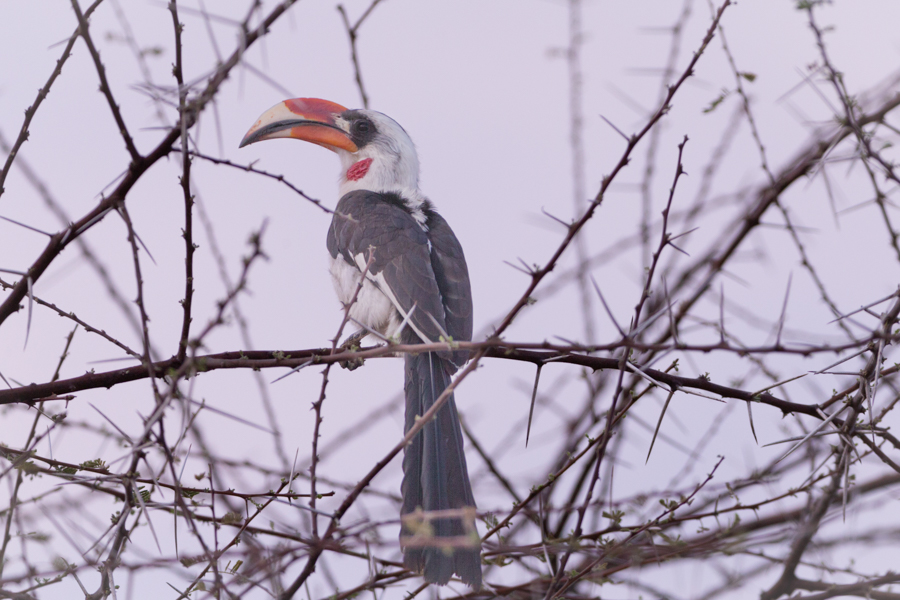
The End of the Road
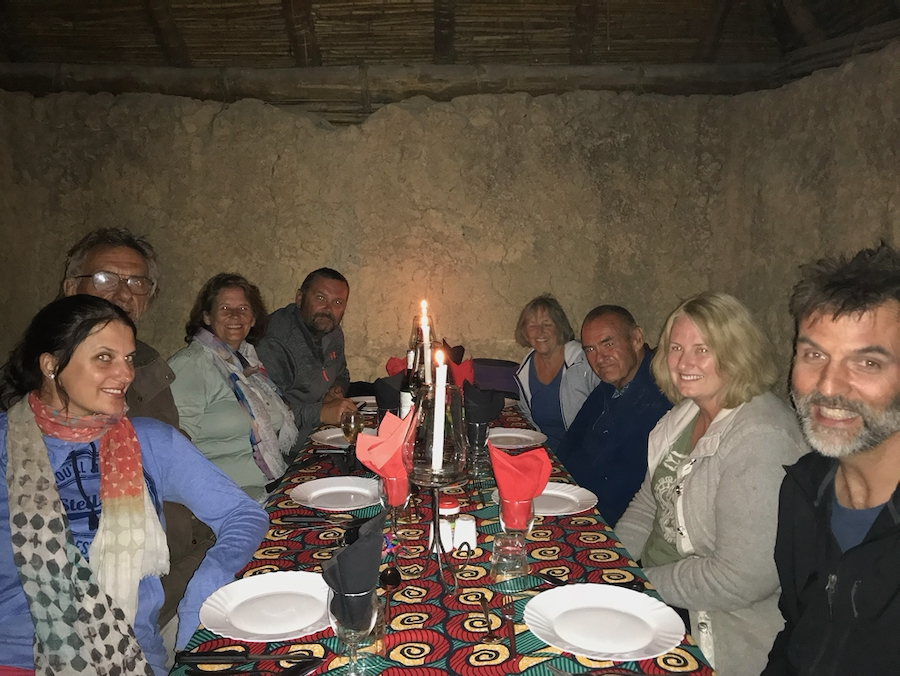
After Ruaha our time together was running low. We had planned to add Selous to the itinerary but were saturated by the park costs by then. Probably a good thing as we really did not have the time. It is a challenging country to self drive through and everything takes much longer than you would imagine. Living in car parks eventually takes its toll.
We drove back to Iringa and to Kizelisa Old Farmhouse. It was Ians birthday and we treated ourselves to a supper at the restaurant. A set menu but a feast of our sore eyes and weary bodies. I found something soft on my iPad and absentmindedly put it in my mouth. It was a slug! Uggh! It was however the second most tender meat I have eaten in Tanzania!
Next day we part. Ian, Carmen, Stu, Vicky and Robin load up for the trip back to Dar and home. We could not have asked for a better bunch of comrades. We turn our noses south to Malawi. Our adventure continues.
“I cannot even imagine where I would be today were it not for that handful of friends who have given me a heart full of joy. Let's face it, friends make life a lot more fun.”
Charles Swindol





